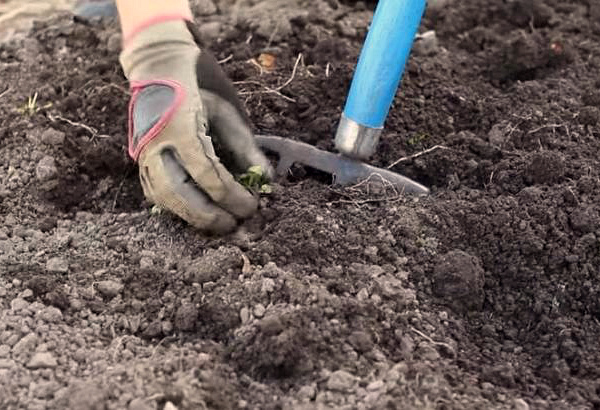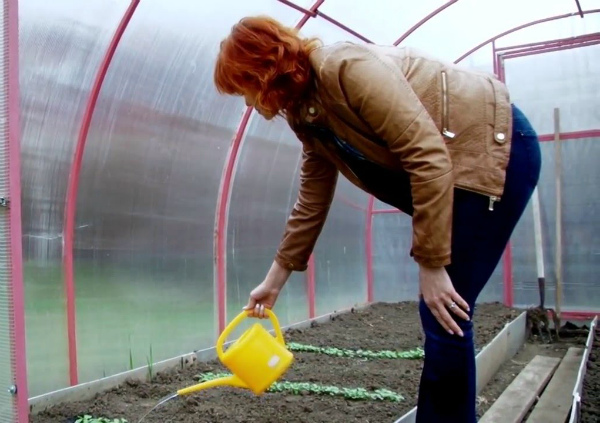How to water radish and how to grow it
Content
Radish sowing technology
This unpretentious vegetable can survive small frosts, it is capable of germinating at an air temperature of + 4 degrees, although it will take a long time to wait. But if we want to get a quick harvest, and ultra-early varieties of radishes ripen in the open field in 2.5 or 3 weeks, then it is better to sow when the ground is completely thawed and warmed up to +10 degrees.
It is advisable to prepare the soil in the fall. To do this, the garden bed after potatoes (and this is the best predecessor), beets, carrots, cucumbers are freed from plant residues, dug up, fertilized, adding compost or humus. If the soil is acidic, then you need to add more lime (dolomite flour, chalk or ash), since radishes will not grow on acidic soil.
In the spring, as soon as the earth thaws in the warm sunlight, it must be dug up again, adding mineral fertilizers. Since our early vegetable prefers light soil, the clay soil should be mixed with sand or peat. The prepared beds are leveled, the sowing grooves are marked at a distance of 10 cm from one another. Before sowing, they can be sprinkled with ash, spilled with hot water.
Seeds are usually sieved through a 2-3 mm sieve to select the largest. Small seeds will give small roots. The seed is disinfected by keeping it in a bright solution of potassium permanganate for half an hour, and then dried so that the seeds do not stick to your hands. Often summer residents still soak them with a growth stimulant, this increases germination.
The sowing itself is called planting by some, since the seeds are laid out one by one every 5-7 cm. Then they are covered with a thin, no more than 1.5 or 2 cm (for varieties with long root crops) layer of earth and lightly tamped, so as to achieve a tight adhesion of the earth to seed. You can, of course, sow, as it turns out, and then break through the seedlings. Most summer residents do just that. But the radish, although it prefers loose soil, requires constant loosening, nevertheless it does not like to be disturbed - and the thinning of frequent shoots worries even those sprouts that remain to grow.
Crops can be covered with black non-woven cloth if it is still cold at night. After the sprouts appear, it should be removed during the day, leaving the beds open under the sun, and laid again at night.
The place for radishes is chosen open, sunny, but it is better to cover the beds from strong winds - this is often done with the help of low arcs and non-woven fabric.
How to fertilize
Radish loves nutritious soil, but root crops are capable of accumulating nitrates, so you need to be careful with fertilizers. The main fertilization takes place in the fall. When the soil is dug up, organic matter is introduced. Complex mineral fertilizers are added in the spring before planting. Often this is limited, but if the plants require additional fertilizing on poor infertile soils, then they are carried out together with watering.
Superphosphate, potassium chloride, a solution of slurry or poultry droppings (and they are diluted ten and twenty times with water) are excellent top dressing during the growth of vegetables. But it must be remembered that an excess of nitrogen can cause the radishes to shoot rather than build up a root crop.
Often gardeners do not want to resort to chemicals, then you can water the plants with herbal mash, mulch the plantings with compost, and from it, when watering, nutrients will gradually penetrate into the soil, which means they will be absorbed by the roots of the plants.
How and what to water
In order for vegetables to grow well, root crops formed even, juicy, there must be constant moisture in the soil. Therefore, watering should be regular and sufficient. Usually outdoors, radishes are watered after a couple of days. But hot days or constant winds quickly dry the land, so it happens, especially in summer, that you have to water every day, maybe twice in one day.
The first time the soil is moistened immediately after sowing, you need to use a watering can with a frequent sieve divider and warm water. It is very important that the water penetrates to the correct depth. So the first time they water it to a depth of 8 cm, and then, when the roots are already forming, to a depth of 15 cm.The radish has a not very developed root system, but in some varieties the main root grows up to 30 cm, it is desirable that it find moisture there for plant nutrition.
Uneven moisture, more precisely, periods of drying out of the earth, can lead to unwanted shoots or empty dry root crops, so it is advisable to avoid this.
The last time it is watered several hours (4–6) before harvesting, then the roots will be juicy, tasty, and can last longer.
You can water it simply with clean water, herbal infusion, ash or tobacco solution, that is, combine watering, fertilizing and prophylaxis against pests.
Loosening the soil
An excess of moisture, as well as its stagnation, can provoke cracking of root crops or diseases, for example, keel, black rot. To prevent this from happening, after watering it is necessary to loosen the soil. First, the soil is fluffed to a depth of 3-5 cm, and as the root grows, the depth of loosening is increased to 8 cm, then to 10 cm. The roots should receive an influx of air, it is not for nothing that this vegetable loves light loose soils, but this should be done carefully so as not to damage the root and the growing root crop.
In the open space of planting, it is very convenient to mulch, then a dense crust does not form on the surface of the earth after rain, moisture is more easily retained in the ground, and it is necessary to loosen much less often.
Radishes need to provide fertile light neutral soil, uniform moisture, timely weeding, loosening of the earth, and, if necessary, protection from pests and diseases, then it will delight the gardener with an excellent harvest of tasty and very useful root crops.
Video "Irrigation of radish under agrofibre"
See how the process of hand-to-hand watering of radishes looks like when planting potatoes with radishes under agrofibre together.





